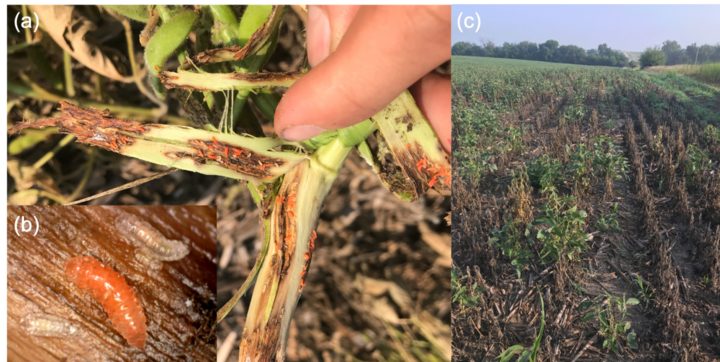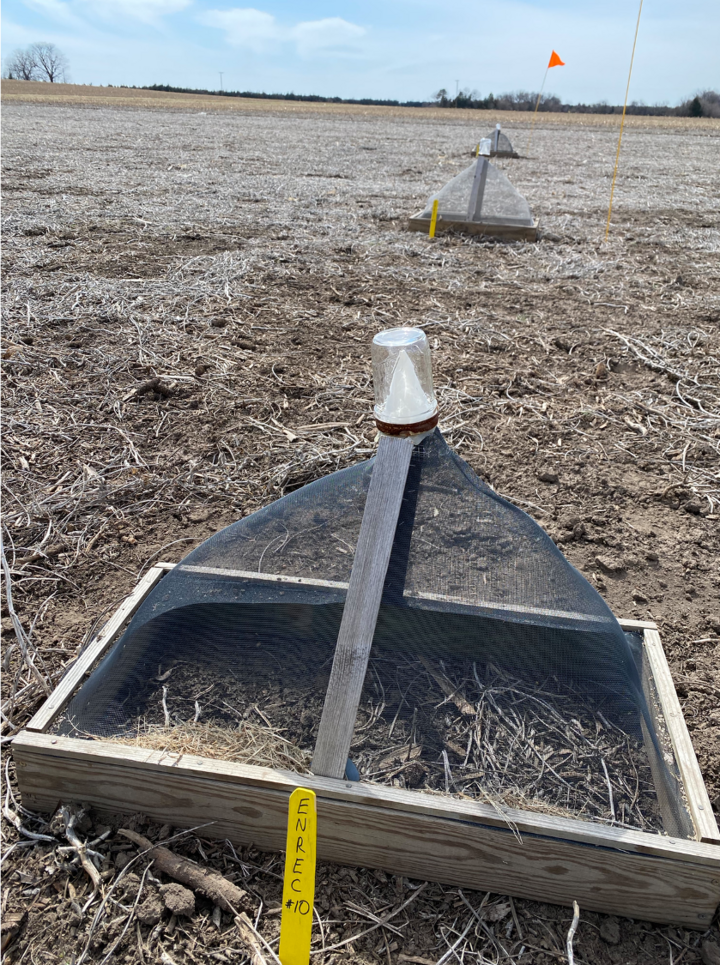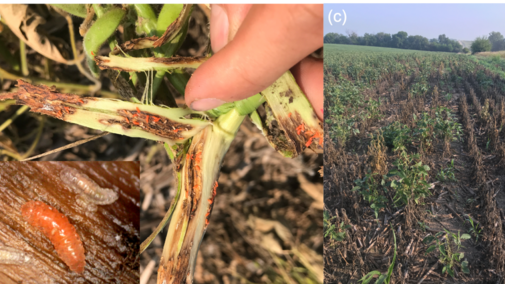In 2018, soybean gall midge (Figure 1ab) emerged as a new species causing significant injury (Figure 1c) and yield loss to soybean in Nebraska, Iowa, South Dakota and Minnesota. The rapid widespread emergence of this new pest has left growers, consultants and researchers with significant gaps in critical information that is necessary to mitigate and manage this new threat.

In 2019, an alert network was established with funding from the North Central Soybean Research Program (NCSRP), Nebraska Soybean Board (NSB) and North Central IPM Center to monitor soybean gall midge adult (Figure 2) emergence using cages (Figure 3) across 27 sites in four states providing growers and consultants with information to aid in the timing of insecticide applications.


Continued support from the NCSRP and NSB has allowed for the establishment of 18 sites in Nebraska (Figure 4). Sites for tracking adult emergence are also set up in Iowa and Minnesota. Covid-19 restrictions have limited South Dakota’s participation in the project.
To sign up to receive alerts regarding adult emergence, send an email with your name, phone number and email address to justin.mcmechan@unl.edu with the subject line “SGM Alert Network”. Those that signed up in 2018/19 do not need to sign up again.
Soybean Gall Midge Mangement Strategies
As a grower or consultant, many of you may be wondering what the best strategies are for managing soybean gall midge in 2020. Our 2019 data suggests that we had no single management strategy that could eliminate soybean gall midge injury. Here are some potential considerations for high risk fields during 2020 season.

- Plant your high-risk fields last (many of you have likely already planted soybean)
- Mowing grassy borders around infested fields prior to emergence showed a potential for reduced infestation in 2019 (this was one field and more research is needed)
- Seed treatments may reduce infestation, but more data is needed
- Foliar insecticides (pyrethroids) applied at 2 days prior to adult emergence and up to 10 days after first emergence showed a yield response. Caution should be taken as this study was conduct on a field with soybean the previous year.
- Soybean gall midge egg laying appears to be limited to plants that are at about the V3 stage and later, as they may need natural fissures (cracks) that form at the base of the stem. Insecticide applications should be delayed until plants are susceptible to gall midge.
As growers consider these management practices, one primary consideration should be the duration of soybean gall midge adult emergence. Data from 2019 indicated an average of 16 days of adult emergence from a given site. This means that foliar insecticide application is unlikely to provide protection for the entire duration of adult emergence.
Although there is no specific indication of when soybean gall midge adults will emerge, we anticipate emergence will occur sometime in early to mid-June.

